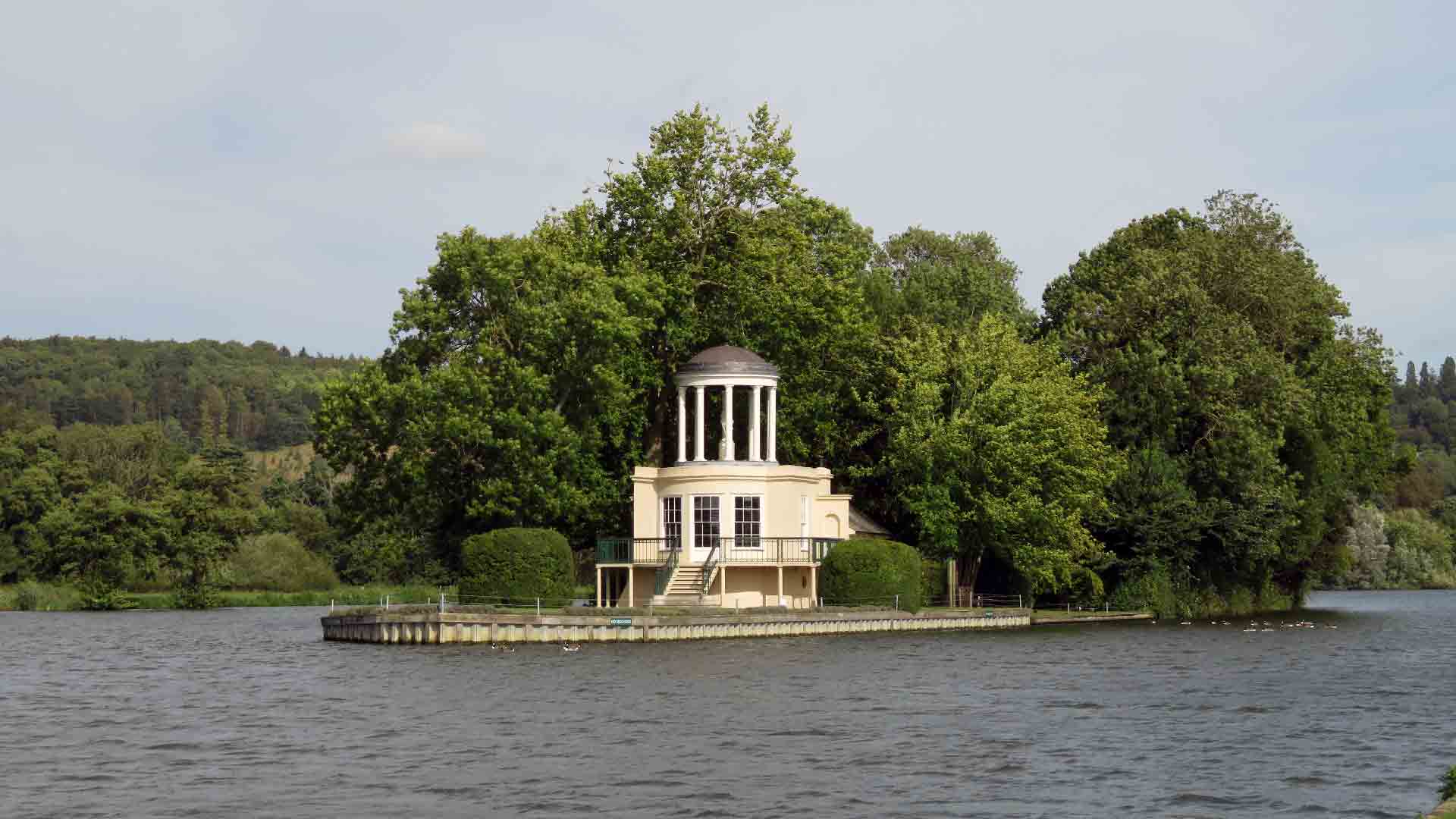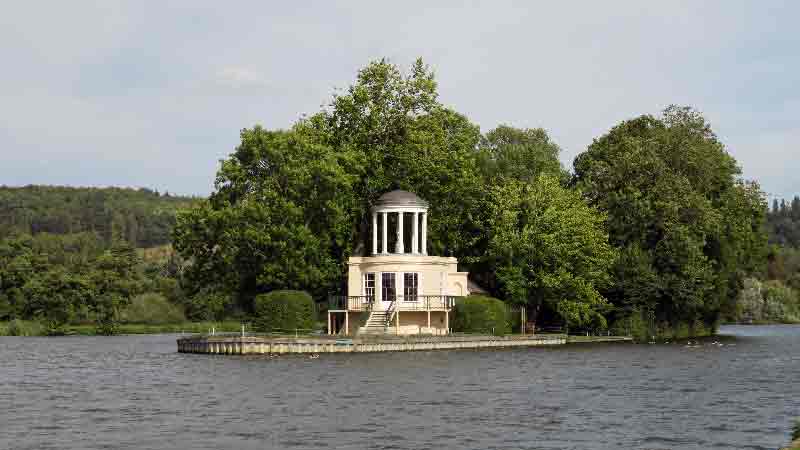

Temple Island and Fawley Temple: Neoclassical Gems on the River Thames
Located in the heart of the River Thames near Henley-on-Thames in Oxfordshire, Temple Island is a small but iconic island that houses the impressive Fawley Temple. This neoclassical structure, built in 1771, is a testament to the architectural elegance of the 18th century and a historical symbol of the region.
History and Architecture of Fawley Temple
Fawley Temple was commissioned by Sambrooke Freeman, a wealthy local landowner, as a fishing lodge and retreat during his boating excursions. Designed by the renowned architect James Wyatt, the temple is one of the earliest examples of neoclassical architecture in England. Its design is inspired by the classical temples of ancient Greece and Rome, reflecting the growing interest of the time in classicism and antiquity.
One of the most outstanding features of the temple is its interiors adorned with Etruscan-style murals. These frescoes, depicting mythological figures and patterns, are unique in the United Kingdom and add an exotic charm to the building. The murals were discovered and restored in the 20th century, returning them to their original splendor.
Temple Island and the Henley Royal Regatta
Temple Island is world-famous for its association with the Henley Royal Regatta, a prestigious rowing competition held annually since 1839. The temple marks the start of the regatta course and has become an emblem of the event. In 1952, the Henley Royal Regatta secured a 999-year lease on the island to ensure its preservation and maintenance.
During the event, the island and the temple serve as a backdrop for the competitions and as a venue for private and corporate events. Its privileged location and architectural beauty make it an ideal place to enjoy the races and the festive atmosphere.
Access and Visits
Although Temple Island is privately owned and public access is limited, it is possible to admire the temple from the river or nearby shores. There are boat trips and walking routes that offer panoramic views of the island and its surroundings. For those interested in architecture and history, viewing Fawley Temple is an enriching experience that connects with England's neoclassical past.
Conservation and Legacy
The preservation of Temple Island and Fawley Temple is an example of how collaboration between organizations can protect historical heritage. Thanks to the commitment of the Henley Royal Regatta and conservation efforts, the temple remains an integral part of the Thames cultural landscape.
Fawley Temple is not only an architectural monument but also a symbol of the cultural heritage of the region. It represents the opulence and lifestyle of the 18th-century nobility, as well as the evolution of artistic taste of the time.
Conclusion
Temple Island and Fawley Temple are must-visit destinations for lovers of history, architecture, and natural beauty. Their presence on the River Thames adds a touch of elegance and mystery to the landscape, inviting visitors to explore and appreciate the rich cultural heritage of Oxfordshire.
